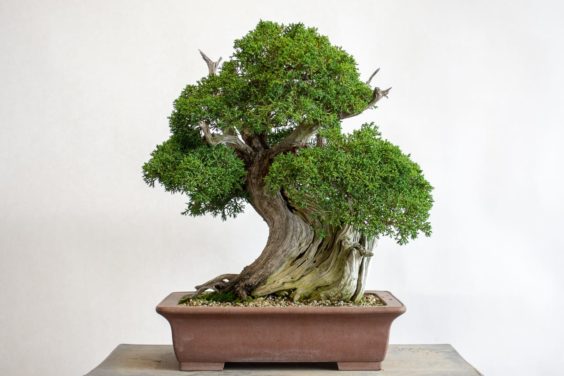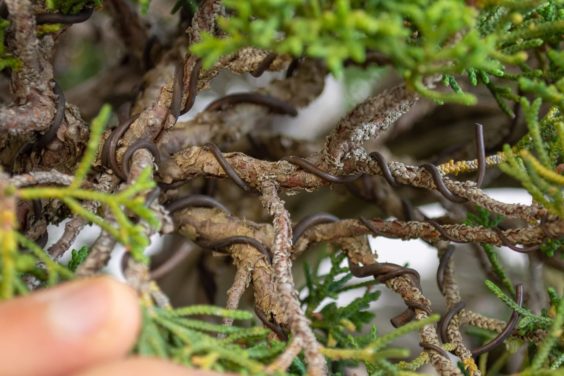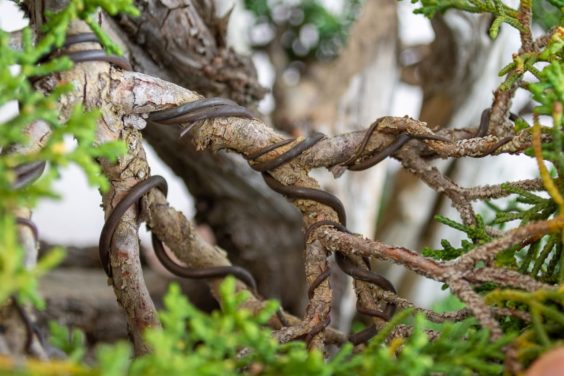If you haven’t checked the wired trees in your garden to see if any wire is cutting in, now’s a good time to do so.
I often wire a lot of trees over winter or in early spring and by this time of year a lot of the wires have started to cut in. This is more of a concern for deciduous varieties and young trees that are growing quickly, but it applies to conifers and older specimens as well.
The juniper below was wired over two years ago.
Shimpaku grafted on California juniper
It’s been growing slowly as the tree was stressed a few years ago and has yet to fully recover. It has, however, produced a lot of small new shoots this year that have caused some branches to swell.
Snug wires
Wires just starting to cut in
I typically let the wires cut in a bit on conifers before removing them as this helps the bends to set, but because I want this tree to gain vigor, I removed all of the wires.
After removing the wire
The tree looks about the same now as it did before removing the wire as the branches have set well. I don’t plan to wire the tree again until I see some runners extending beyond the silhouette of the tree. If the root growth has been good, I’d expect to see some of this by the end of the year. And at that rate the tree would be ready for wiring in just over a year.
Tune in Friday for more about juniper health and summer watering.
Subscribe to Bonsai Tonight
New Posts Delivered Every Tuesday and Friday




Zack Clayton says
Jonas, This was great, but based on the headline, I thought it would be more mechanics oriented. We teach cutting to de-wire, but a lot of our beginners don’t get it. Are you aware of a good YouTube or Facebook that covers the subject and suggests some best practices?
Jonas Dupuich says
Good point Zack, I don’t know of something like this. I’ve wanted to do a post on it but it doesn’t show as well in photos. Maybe I’ll outline some of the best practices. Will see about making a post – and at some point, video – on this when I get the chance.